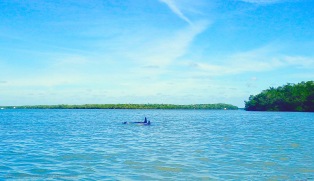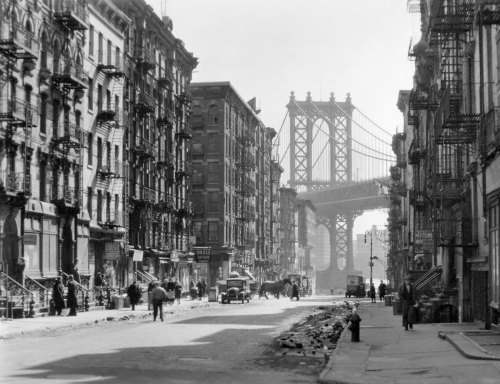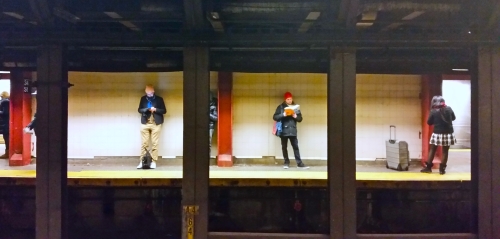By Johna Till Johnson

The “Everything Tree” on Panther Key
In the bright light of full morning, I sat down to make coffee and breakfast… and had a rude shock. The Jetboil, which had worked perfectly well last night (and in pre-trip tests), now would no longer start.
This wasn’t catastrophic, but it was somewhat serious. You can start a Jetboil with a match.. but I’d brought just a handful of stormproof matches with me. And I only had freezedried food, which required hot water to cook. So I’d either have to cut short my trip, or curtail my eating—neither of which seemed ideal.
Normally I’d have been panicky. Well, actually, normally we would have fallen back on Vlad’s rickety stove, which he always packed even after we converted to the Jetboil. But there was no longer a “we”, and Vlad’s stove was somewhere back in New York. So that wasn’t an option.

From Pumpkin Bay to Fakahatchee and back
Instead of panicking, I took a close look at the mechanism. It basically works by placing a voltage across the gap between two pieces of wire. Current arcs across, and generates a spark. Close inspection revealed that one of the pieces of wire was encrusted with something, which would preclude any sparking. I carefully filed it off with my knife, and tested.
It worked!
I sat back on my heels and smiled with satisfaction. Perhaps it was my imagination, I but I could feel Vlad smiling, too. I would have morning coffee—and a hot breakfast!
And then…what?
As the water for the coffee boiled, I savored a totally unfamiliar sensation: Complete freedom, with no deadlines or constraints. I could paddle wherever took my fancy, go for as great or small a distance as I chose.
I could… freepaddle.

Paddling on the “inside”: Calm, clear, quiet
Russell had mentioned an Indian shell mound up by Pumpkin Bay, and said you could camp there. After inspecting the charts, I decided that would make a nice excursion for today. If I could find the shell mound (and it was indeed camp-able), I’d spend the night there. En route, I’d check out the other keys to see if they held attractive campsites, in case the shell mound didn’t work out.
I had a plan! And options.
I finished breakfast, packed up, and launched.
Paddling “inside” the Ten Thousand Islands is very different from paddling in the Gulf. The water is quieter, and it can feel almost dreamy at times, as you glide along under the mangroves. Today was warm and calm, and I arrived at the Indian shell mound earlier than anticipated, in the early afternoon.
More accurately, I overshot the shell mound, going far enough up the Pumpkin River to get tangled in overhead branches before turning around, and ultimately sighting the (very narrow) landing spot. After securely tethering the boat to a mangrove, I scrambled up a short rise and into…
…a field of golden reeds, drying in the sun.
It was eerily quiet.

Reeds at the Pumpkin Bay Indian mound
Not that it’s exactly noisy out among the mangroves, aside from the occasional boat motor or croaking sea bird—but this was a special kind of quietness, charged with a low-key, but very real energy. It was beautiful, and sad, and…not precisely hostile, but not welcoming.
I wandered around taking pictures, trying to decide if I wanted to camp there, and thinking about the Calusa Indians who had inhabited the area until the mid-1700s. They were by all accounts quite fierce. I suspected they would not have appreciated my presence overnight.
It was almost as if they were saying to me, “Thank you for appreciating our space, now go home.” Moreover, Russell had told me about hearing a Florida panther scream one night when he had camped there. I was prepared to deal with sharks and gators… but panthers?
Beautiful as the place was, I wanted to return to the outer islands. I decided to return to White Horse Key.
I had no trouble finding my way out of Pumpkin Bay and arrived at White Horse Key by late afternoon, with plenty of time to make camp, cook dinner, and watch the sun set over my former campsite.

Sunset over Gullivan Key
I fell asleep watching Venus glimmering brightly beside the tiny sliver of the waning moon.
The morning dawned clear and beautiful—and noisy! There was the splash of pelicans striking the water as they fished, oblivious to the presence of the kayaker on the beach. That was complemented by the hoarse sound of dolphins breathing, as they arced above the nearly still water.
Once again there was the question of where to go next. This time, there was a complicating factor: a front was predicted to roll down from the north in two or three days, bringing with it rain, and more critically, wind. I’d need to find someplace where I could shelter—not right away, but soon.
I sipped my third cup of coffee and scrutinized the charts. Today’s trip would involve scoping out the only official “inland” campsite, at Fakahatchee Bay. If it turned out to be a good site, I’d shelter there for a couple of nights. If not, I’d continue on.
Satisfied with my vague plans, I prepared to launch.
A small motor boat had landed on the beach, disgorging a handful of people, clearly day-trippers in short and T shirts. One of them approached me. He asked how far I was headed, and when I told him I had no idea, he was apparently stunned.
I smiled. Then I pushed my boat out into the waves.
There was a light breeze and satisfying chop. The keys drifted by to the left, first the length of White Horse, then Hog Key, and finally Panther Key.

Cloud, sky, mangroves…
As I paddled by Panther Key, I felt a pang of disappointment. It looked like a lovely place to camp, with a series of long, low, beaches facing the Gulf. But it was already quite evidently inhabited: tents (some quite large) were up in most of the campsites, and someone had hung a set of Spongebob Squarepants towels out to dry. Camping there didn’t seem to be an option for later that night, not if I wanted solitude.
There were a few empty spaces, though… and anyone who packed Spongebob Squarepants couldn’t be all bad! Maybe having neighbors wouldn’t be a bad thing.
The day passed lazily. I located the inland campsite with no trouble, but it was clearly an “emergency only” site, at least for kayakers. Instead of a wide swath of beach, there was a short, steep cliff (too high to bring a kayak up, so the boat would have to be tethered on the water, and gear unloaded). And it was covered with vegetation, with no breeze and the persistent hum of mosquitos, even at midday.
Paddling back towards the Gulf, I once again passed Panther Key, with its strip of inhabited campsites.
There was a small fishing boat out front. I swerved out to sea to avoid its fishing lines. “I’ll try to stay clear,” I shouted to the captain, a wild-haired man of indeterminate age. “Oh I’d love to land a kayak,” he replied jovially. “I could mount it on my wall.”
Chuckling to myself I continued along my way, pulling closer to the shore to inspect the campsites. A little further on I encountered a couple of guys, one heavily sunburned and wearing what appeared to be billowing blue Bermuda shorts. He introduced himself as Mark, and we chatted. It turned out the campsites were part of a group of extended family and friends. The group spent a week here every year, relaxing and fishing. “Come join us for dinner!” Mark said. “We’ve caught lots of fish, more than we can eat!” With that, they ambled off down the beach.
I had to admit, the invitation sounded tempting, especially after nearly three days of freeze-dried food. I pulled the boat up on land and started looking for a suitable campsite.
A few minutes later, two women came by and introduced themselves as Carolyn and Eileen. They, too, invited me to stay for dinner—and suddenly, I was decided. I would-why not?

The kayak has landed! First campsite on Panther Key
I dragged the boat further up on land and tethered it to a palm tree. There was a nice snug campsite next to the tree, comfortably large enough for a bivy sack. And a nearby sign would provide just the support I needed to string up the mosquito netting I’d brought with me.
As I unpacked, I listened to the marine radio to monitor the progress of the storm front. The prediction had become considerably more dramatic: from 15 knot winds with 20 knot gusts (which I regularly paddled in), it had leapt to 25-knot winds with 30-knot gusts, which I (and most paddlers) didn’t want to get caught in.
Worse, the front was supposed to hit earlier than expected, by tomorrow night—which meant I needed to be holed up someplace safe by then.
One option was to stay where I was. It was actually ideally situated: facing south (the winds were predicted from the north) with a forest behind me. I mentally stored that idea, then finished setting up camp.

Panther Key friends
As the sun fell, I made my way over to the campfire that my new friends had started. It was next to the root ball of a gigantic overturned tree, which they used as a kind of ad-hoc storage closet. Hanging from the roots of the “everything tree”, or tucked between them, were plates, cups, cutlery, and various random articles of clothing (sunglasses, hats, flip-flops).
There were around a dozen people: a husband-and-wife couple (Carolyn and Mark), their friend Rob, Carolyn’s friend Eileen, the wild-haired fisherman (Dave), his partner, Carolyn and Mark’s 16-year-old daughter Rachel, Rob’s similarly-aged daughter, their boyfriends (who had brought the Spongebob towels), and confusingly, the boyfriend of Rob’s other daughter, who wasn’t there herself. There was also Rob’s dog, Wolfie, and Mark and Carolyn’s dog Bella.

Bella in the seat of honor
Rob offered me a beer, which I accepted gratefully. Even more welcome was Carolyn’s homemade smoked mullet chowder, with freshly caught and smoked mullet and made with potatoes, carrots, and peas. There was also fresh-caught shark, grilled over an open fire.
Warmed by the fire, and delighted by the conversation, I couldn’t believe how happy I was. It had been another entirely unexpected day.
A bit later I said goodnight and headed back to my campsite. Cocooned in my bivvy sack and draped in mosquito netting, I was perfectly at peace. Waves lapped the beach close by, and from farther off came the strains of the guitar music and the faint scent of woodsmoke. Overhead the stars blazed, and I fell asleep under their benign light.

Sunrise on Panther Key (Wolfie and tree)
The next morning I awoke early to take pictures. I’d already decided it would be a “rest day”: Mark had advised that he and the rest of the crew would be heading out about noon, and I could have one of their campsites. It was perfect for riding out the storm front: I’d move to high ground,under the protective forest, out of the wind and any waves that resulted.

Second campsite: Snug under trees!
After helping my friends pack and saying goodbye, I moved camp, battening down the hatches (quite literally!) in preparation for the high winds that were supposed to hit that night.
Instead of paddling, I went for a leisurely swim, then napped in the late-afternoon sun.
After an early dinner, I tucked myself in to await the storm.


















